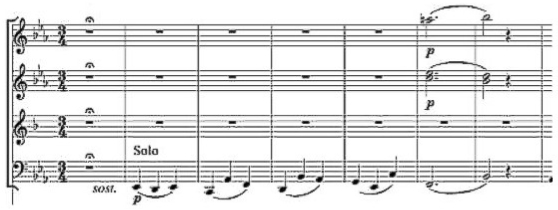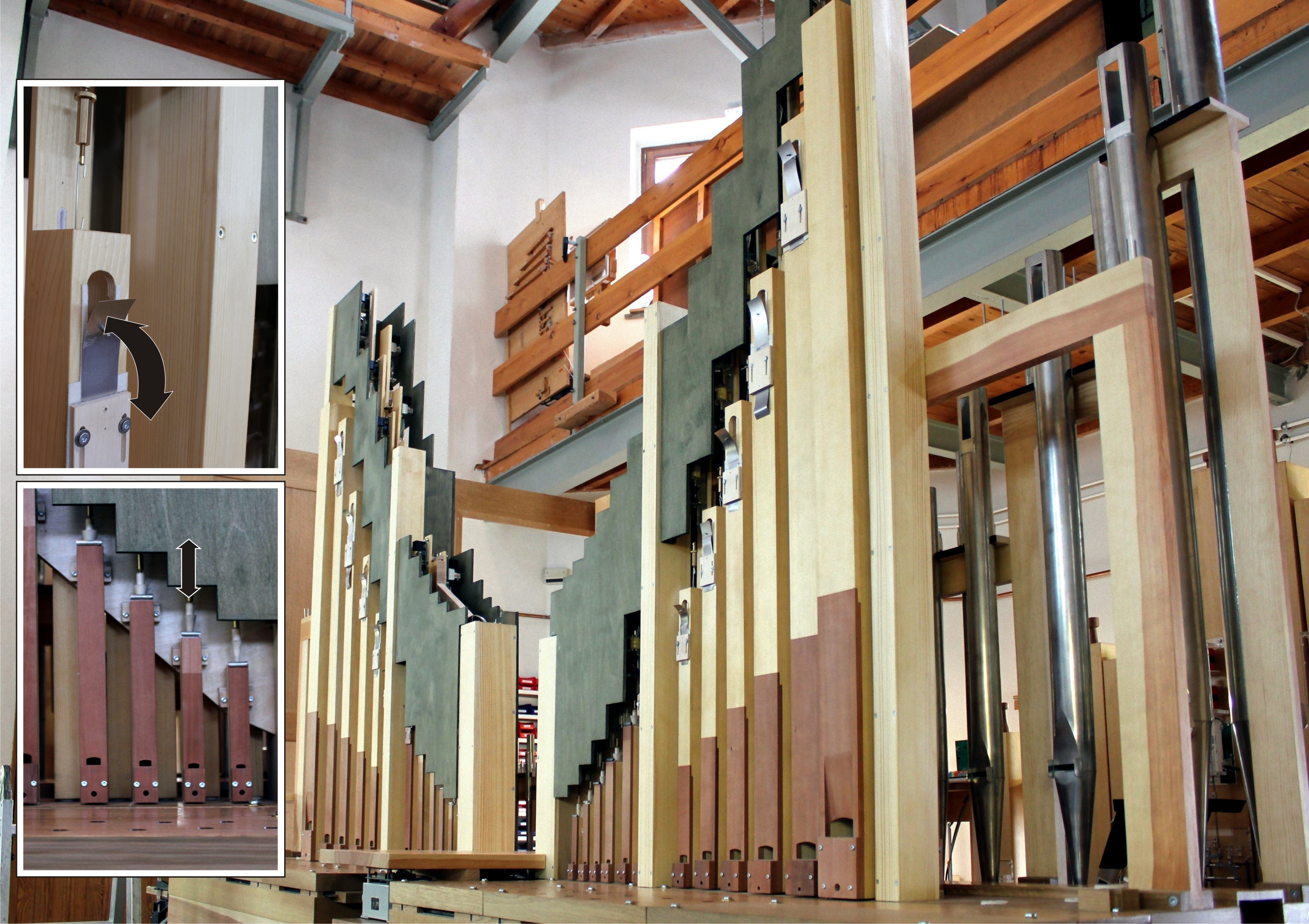Hermode Tuning
Hermode Tuning is a program that replaces the poor static tuning models of key instruments and virtual computer instruments by a richer self-adjusting dynamic tuning which is a customary practice for qualified ensembles with string and wind instruments and for singers at well-educated choirs.
Our human ear can differentiate subtle sonic nuances. However, it needs some minutes to work optimally. Therefore, listen a few times to our musical examples and compare the different tuning models. Within short you will notice amazedly the different sound quality of various tuning.
Here you can listen to an ensemble making music with fifths and thirds in just intonation. Pressing the start button below the image starts the video. A diagram will be displayed inside the image, showing the tuning corrections by moving bars. A bar pointing upwards means a pitch correction to a higher position than with equal temperament, pointing downwards means a correction to a deeper one.
The same ensemble, the same musical piece. But now the quartet intones with fixed equal temperament. Therefore, no tuning diagram is shown. The sound is sharp and dull.
Why does music in just intonation sound better than with fixed, almost equal temperament?
As soon as two or more tones sound simultaneously, they produce as a result of their superimpositions so-called differential or combination tones. The frequency of such differential or combination tones can be calculated as “frequency of the higher tone minus frequency of the lower tone”. If the differential tone matches one of the original tones, the sound result will be clear and forceful. Otherwise the sound will be sharp and unsteady. The following diagram shows two differently tuned A major chords and their resulting differential tones. Equal temperament induces two disharmonious notes: A flat and B flat.

For the just intonation of major triads, the major third should be set to a relatively deep frequency position, while the minor third requires a relatively high frequency position. In both cases the fifth should be tuned a little bit higher. See the diagram below.

More detailed information can be found in History of Tuning.
The previous musical example has been produced with virtual instruments. In the following, we present a recording of a real orchestra, the „Scottish Chamber Orchestra“.
They play the beginning of Joseph Haydn’s Symphony No. 103 (with the timpani roll). It starts with the timpani roll, followed by four measures of a bass line. Subsequently follows the first chord of the woodwind section. This is the dominant-seventh chord F_A_C_E-flat, followed by the tonic interval B-flat_ D. Intonating a dominant seventh chord precisely is difficult, and when it appears in the beginning, it is twice as hard. Many orchestras fail, but the “Scottish Chamber Orchestra” masters it impressively.

The flute in soprano position has the most delicate part. The A, representing the major third, must be set to a deep pitch, although, shortly before, the whole orchestra tuned to an A of 441 Hz. This musical clip is published with the kind permission of DELOS. The complete Symphony is published under DE 3063
The analysis of this musical clip with the specific tones of this chord sequence shows a high level of consistency between the ideal of just intonation and the real pitches. The elements drawn in blue show the ideal values, the black ones show the real performed pitches.

Notabene: In a common system of just intonation, considering only the thirds and fifths, the diminished seventh (the E-flat in this example) has an indifferent tempered position. Alternately it is possible to tune this seventh to a very deep position as “natural seventh”. In Symphonic Orchestras it is not common to practice this idea, since many instruments cannot tune that low. String ensembles and chamber choirs have less problems with this natural interval.
Some musicians hold still the obsolete view that an increased leading note (this is the A in the example above) will lead to an excellent playback. But this is in error. Such an intonation attitute leads to an diffuse and impure sound. In case the Scottish Chamber Orchestra would follow this idea, the sound result would be as presented in the following musical example:
It is frequently asked whether it is possible that in a concert for piano and orchestra the orchestra follows the ideal of just intonation although the piano is tuned to equal temperament. This is no problem, as you can hear for yourself in the following example.
In the following clip, both, piano and orchestra, are controlled to just intonation by Hermode Tuning. This sounds even better. Unfortunately this is only possible with digital and virtual pianos.
Tuning both, piano and orchestra, to equal temperament, creates a dull and rough sound. Compare the wind instruments from time 02.27 on. Sensitive ears my notice this already during the string passages before.
 Here you see an amazing technologic and musical development: A pipe organ with Hermode Tuning inside. Each pipe has a tuning device, controlled by a magnetic drive. A CPU controls these magnetic drives in real time, depending on the current harmonic situation.
The organ has been developed and constructed by the Mitteldeutscher Orgelbau at Bad Liebenwerda/ Germany.
Here you see an amazing technologic and musical development: A pipe organ with Hermode Tuning inside. Each pipe has a tuning device, controlled by a magnetic drive. A CPU controls these magnetic drives in real time, depending on the current harmonic situation.
The organ has been developed and constructed by the Mitteldeutscher Orgelbau at Bad Liebenwerda/ Germany.
This organ actually is installed behind an art nouveau front in the St. Petri-Pauli Church at Eisleben/ Germany. This is the church in which Martin Luther was baptized on November 11 in 1483.
In the following we present two recordings made at this organ.
Mozarts Adagio in C, KV 356, presented with two simple and clear stops: Flute 8' und 4', controlled by Hermode Tuning. On the organ plays Michael Kaufmann.
The same musical piece, recorded with equal temperament. It sounds somehow pathetic:
A Chorale with prepended Prelud from Johann Sebastian Bach,recorded with all three stops of this organ (16' Subbass, 8' Flute and 4' Principal) contolled with Hermode Tuning to a dynamic just intonation.
For comparison the chorale in equal temperament. The music sounds narrow with week basses,
Felix Mendelssohn's chorale "Verleih uns Frieden gnädiglich" (Grant us peace graciously) in just intonation. On the organ plays again Michael Kaufmann.
The same musical piece in equal temperament presents the same shortcomings like the example above.
Further musical examples will be found in Examples.